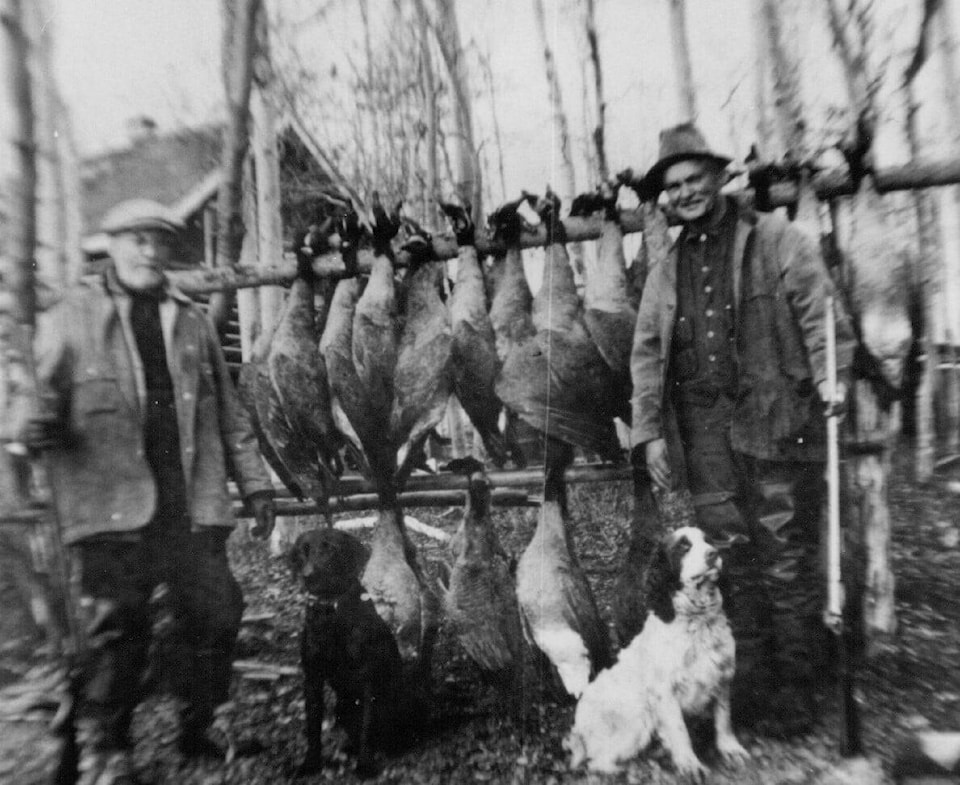Contributed by Doug Van Tine
The country was spectacular. We were able to hunt and fish 11 lakes: Ootsa, Intata, Netalkuz, Chelaslie, Uchu, Tetachuck, Eutsuk, Pondosy, Whitesail, Sinclair, and Tahtsa River. Each one having rivers ranging in length from one mile to more than 20 miles. No one, in modern days, will ever see this amazing country that we grew up in, or can even imagine it.
Ootsa Lake had outstanding beauty. The lake was over 40 miles long and, in some places, up to two miles wide. There were many sheltered bays and miles of pebble beach, some were pure white limestone. Rainbow trout were in abundance, the largest I’ve seen was 18 pounds, caught by Wes Loback in the ‘40s. Eight to 12 pounds was very common.
The northside of the lake supported over 90 families, some were First Nations families. Most had large acreages which were farmed. Everyone created their own work by farming in the summers and saw-milling in the winter; plus, guiding, fishing, and trapping.
There were four post offices: Marilla, Ootsa Lake, Streatham, and Wisteria. It was a very active community. Everyone was involved in putting on dances and celebrations of all sorts; sports like ball games and hockey, were the most common.
The majestic mountains on the south side added to the beauty. The north side of Ootsa and the head of the lake were some of the best, if not the best, winter feeding grounds for moose. The moose would swim across the lake at the narrowest spot; hundreds and hundreds each year, and then they would return to the south side after breakup.



